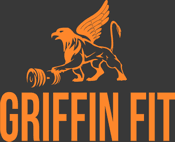The Stiff Leg Deadlift
by Tia Dewick in Training

The stiff leg deadlift is a leg-based exercise which is a variation of the deadlift. It primarily works the hamstrings, but it also works the gluteus maximum, latissimus dorsi and the erector as secondary muscles which can help to improve your posture, lower back strength, power, jumping ability and hamstring flexibility. It has also been shown that the stiff leg deadlift can help to prevent and treat back pain. The stiff leg deadlift is a really good exercise to include within your training as most leg exercises predominantly work the quadriceps. Ideally you want your quadricep to hamstring strength ratio to be 3:2 (ie if you can lift 30kg for the leg extension, ideally you want to be able to lift 20kg on the leg curl) so this will help keep you in a healthy strength ratio.
Technique
- Position the bar or dumbbells on the floor out in front of you so that you can grip the weights in line with your shoelaces, with your feet shoulder width apart
- When performing this movement it’s really important that you have a small bend/flexion at the knee joint so that the knee isn’t locked out as this helps to protect the joint
- Push your hips back and lean forward (hinging from the hips) with a straight back that is parallel to the floor and then grip your hands around the weights/bar
- Lift the weights/bar off the ground and aim to lift them as vertically as possible, so keeping the weights tracking along the front of your legs (if you lift the weights too far away/in front of the legs then you may experience back pain)
- Once you have locked out the hips, lower the weights back down to the ground in the same line of movement that you lifted them
- Let the dumbbells/bar touch the floor and repeat the exercise until you have completed your target number of reps
Grip variations
If you find that your grip fatigues before your hamstrings, a great way to help get in some extra reps is to change into a mixed grip position. This means that rather than having both palms facing towards the body, you have one palm facing the body and one palm facing away from the body. This just helps prevent the bar rolling and therefore helps improve your grip. Alternating your grip with each set can also help improve your training performance by minimising your grip fatigue to help you complete all of your reps
Increase hamstring recruitment
If you want to increase the recruit of the hamstrings without going up the weights, place a small plate (such as a 2.5 plate) under each foot to elevate your toes off the floor.
